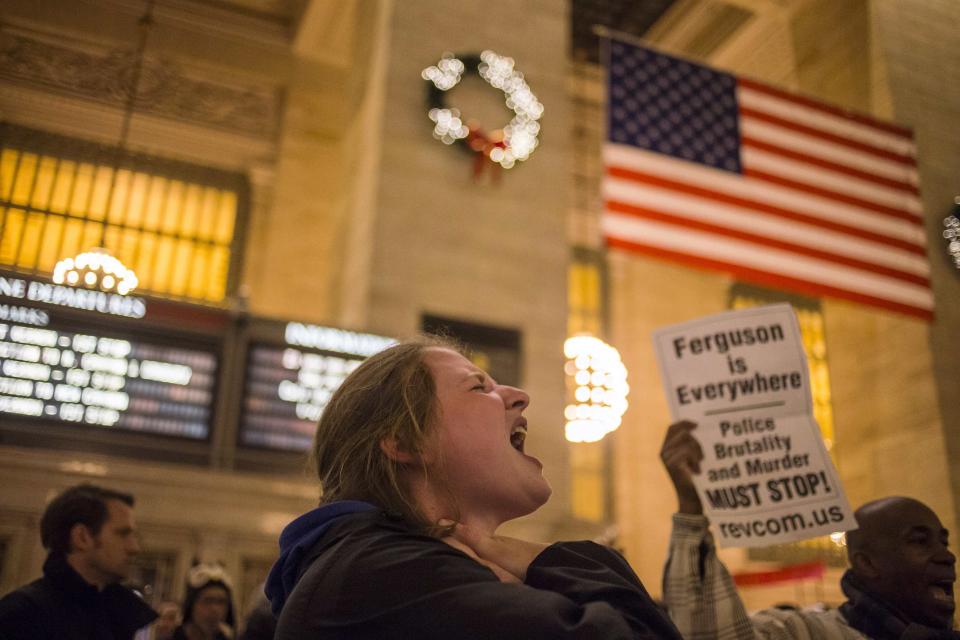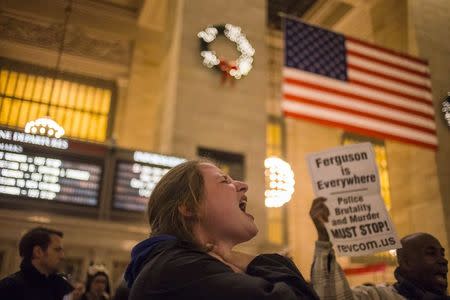New York protesters to stage mass whistle-blowing at police stations
By Sebastien Malo NEW YORK (Reuters) - The latest wave of protests in New York against the killing of an unarmed black man by a white patrolman began on Friday with a visual demonstration by artists in Times Square and a rally outside City Hall. As hundreds of tourists and shoppers watched, protesters held up stark, black signs with white lettering bearing the names of more than 100 people who organizers say were victims of police violence. The artists are members of a Brooklyn-based collective called We Will Not Be Silent. In Lower Manhattan, more than 100 people gathered in the cold on the steps of City Hall, some carrying homemade banners demanding an end to police violence. A mass whistle-blowing outside three police stations in Upper Manhattan, the Bronx and Queens on Friday evening and the latest in a series of so-called "die-ins" were also planned as part of a "Week of Outrage." Protests have swept the city since last week, when a grand jury decided not to indict Officer Daniel Pantaleo in the July chokehold death of Eric Garner. More recent demonstrations have drawn fewer people, and the number of arrests has dropped. Nearly two-thirds of New York adults believe that the grand jury should have brought criminal charges against Pantaleo, according to a New York Times/Siena College poll released on Friday. The poll of 760 adults was conducted from Dec. 4-10. The Garner case and the shooting of an unarmed black teenager by a white police officer in Ferguson, Missouri, this summer have sparked anger in the United States over law enforcement's treatment of African-Americans and other minority groups. Critics say the U.S. justice system turns a blind eye to unjustified police violence. Speaking before the City Hall rally, Sonskeshana Kornegay, a retired educator from Harlem, said the United States is in desperate need of prayer. "When politicians are seeking office you can't keep them out of the churches. Now we're here to say it's time for you to give it back." The "die-ins" have become a regular occurrence during the protests, and another was slated for Friday afternoon on Manhattan's Upper East Side.Similar to sit-ins, die-ins feature protesters lying on the ground, often for several minutes, in silent solidarity with Garner and other black men who have been killed recently during confrontations with police. The die-ins have tended to be brief, with protesters moving to new locations before police start making arrests. (Additional reporting by Natasja Sheriff; Editing by Frank McGurty and Jonathan Oatis)



